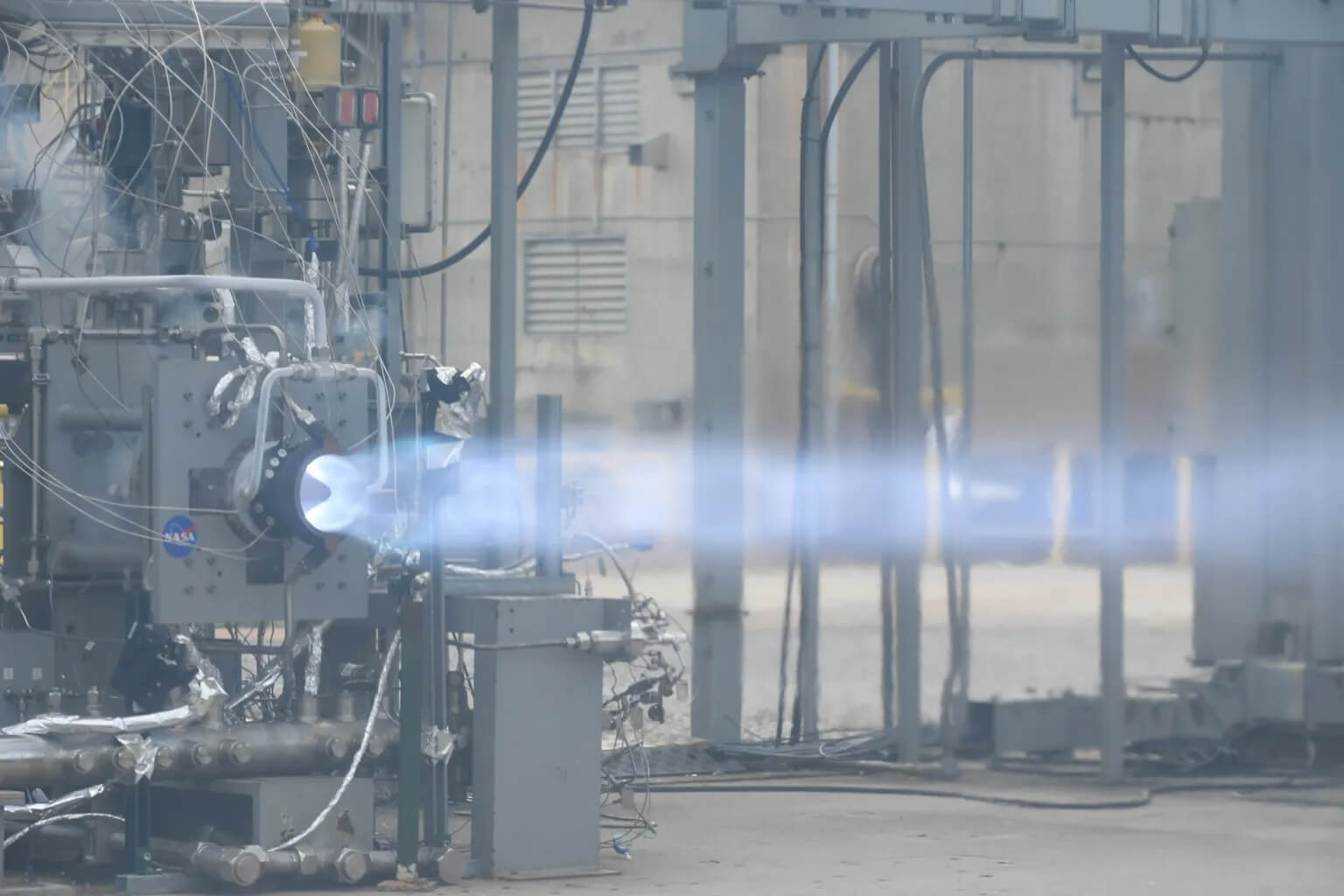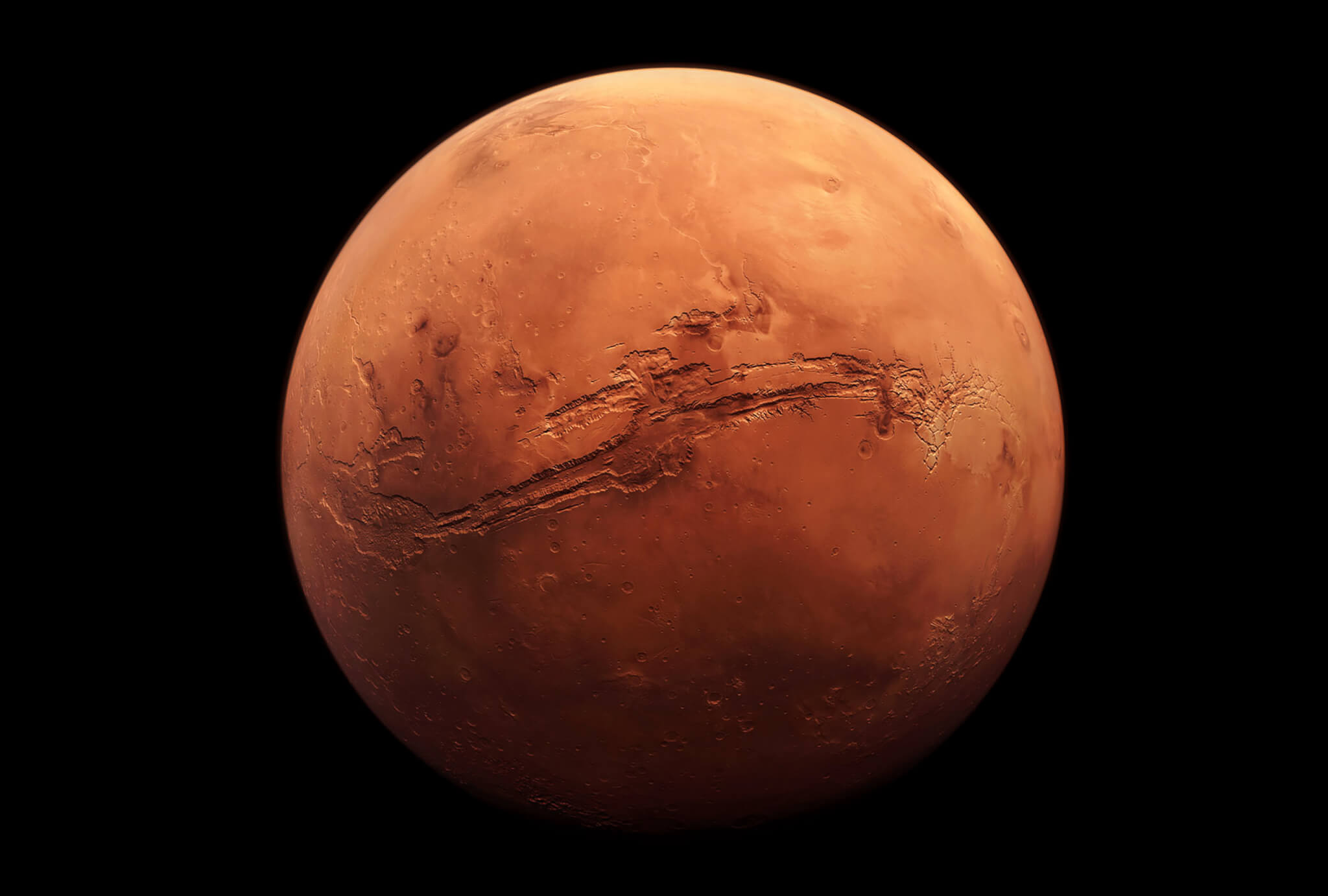HUNTSVILLE, Ala. — It would take astronauts more than half-a-year to travel to Mars, as the Red Planet is a whopping 300 million miles away. However, NASA is hoping to trim some time off the seven-month trip, all thanks to a 3D-printed rocket.
The space agency has successfully tested an innovative Rotating Detonation Rocket Engine (RDRE) at the Marshall Space Flight Center in Huntsville, Alabama. This cutting-edge propulsion system, which was 3D-printed, achieved a prolonged burn of 251 seconds — over four minutes — generating an impressive 5,800 pounds of thrust.

Thomas Teasley, a combustion devices engineer at Marshall who leads the RDRE test effort, explained the importance of this sustained burn, saying it closely mimics the typical demands of a lander touchdown or a deep-space burn, crucial maneuvers for setting a spacecraft’s trajectory from the Moon to Mars.
The RDRE technology underwent its initial hot fire test in the summer of 2022 at Marshall, in collaboration with In Space LLC and Purdue University, both based in Lafayette, Indiana. That initial test yielded over 4,000 pounds of thrust for nearly one minute. The latest test aimed to understand better how to adapt the combustor to different thrust classes. This adaptability is key to supporting a wide range of engine systems and missions, including landers, upper-stage engines, and supersonic retropropulsion. The latter, a deceleration method, could be pivotal for landing larger payloads or even humans on Mars.
“The RDRE enables a huge leap in design efficiency,” says Teasley in a media release. “It demonstrates we are closer to making lightweight propulsion systems that will allow us to send more mass and payload further into deep space, a critical component to NASA’s Moon to Mars vision.”

Collaboration is a cornerstone of this project. Engineers at NASA’s Glenn Research Center in Cleveland and researchers at Venus Aerospace of Houston, Texas, are working alongside NASA Marshall to refine and scale up the technology for enhanced performance.
The RDRE project is managed and funded by the Game Changing Development Program within NASA’s Space Technology Mission Directorate. This test marks a significant step forward in space exploration, potentially revolutionizing how we approach deep space missions and the future of interplanetary travel.
Can Mars Sustain Life?
The question of whether life can exist on Mars has intrigued scientists, astronomers, and enthusiasts for decades. Mars, our neighboring planet, presents a hostile environment that differs significantly from Earth. However, recent discoveries and ongoing research are shedding light on this fascinating topic.
Mars is characterized by extreme conditions that are typically considered inhospitable for life as we know it. The planet has a very thin atmosphere, composed mostly of carbon dioxide, with traces of nitrogen and argon. This thin atmosphere leads to low atmospheric pressure, making the existence of liquid water on the surface nearly impossible. Additionally, the Martian climate is extremely cold, with average temperatures around -80 degrees Fahrenheit (-62 degrees Celsius).
Water is a fundamental requirement for life, and Mars does have water in the form of ice. The presence of polar ice caps and evidence of ancient river valleys and lakes suggest that Mars once had liquid water on its surface. Recent missions have also detected signs of hydrated minerals and the seasonal flow of briny (salty) water. These findings suggest that liquid water might still exist in some form, possibly beneath the Martian surface.
The primary focus in the search for life on Mars is on microbial life. Mars’ subsurface, protected from harsh surface conditions, could potentially host microbial life. The discovery of extremophiles (organisms that thrive in extreme conditions) on Earth in environments once thought to be uninhabitable has fueled this speculation.
Mars has traces of methane in its atmosphere, a gas that on Earth is largely produced by biological activity. The seasonal variation of methane levels on Mars suggests a possible biological origin, though geological processes could also be responsible.

NASA’s Perseverance rover, which landed on Mars in February 2021, is equipped to search for signs of past life and collect soil and rock samples. These samples could provide crucial insights into the planet’s geology and potential for hosting life. Additionally, missions like the European Space Agency’s ExoMars rover are designed to drill into the Martian surface to search for signs of life, past or present.
While the harsh conditions on Mars make the existence of life challenging, the possibility of microbial life, especially in the planet’s past, remains an open question. The ongoing and future missions to Mars are critical in answering this intriguing question and expanding our understanding of life in the universe.
You might also be interested in:
- Traveling to Mars poses serious cancer risk for humans, study finds
- Breakthrough turns NASA waste into key for colonizing Mars
- NASA enters ‘home stretch’ in mission to reach golden asteroid worth $10,000 quadrillion

